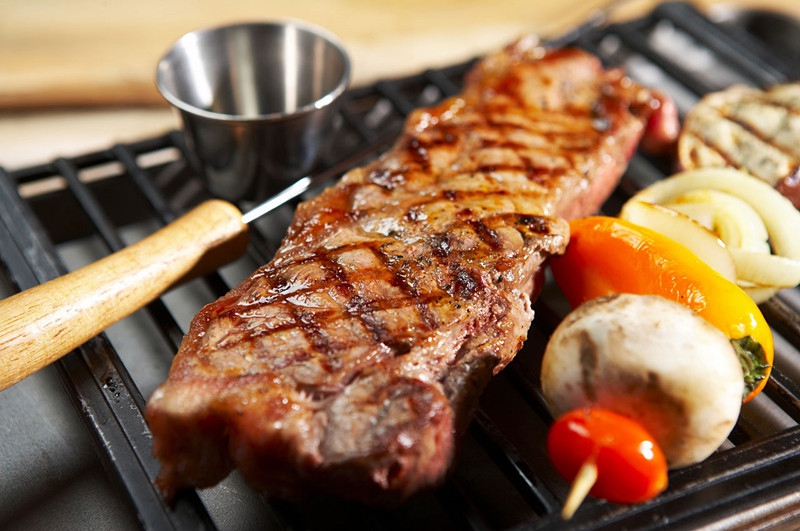If your idea of "barbecue" involves a gas grill, a Crock-Pot, or recipes your girlfriend found on Pinterest, read this very slowly, very carefully, and maybe even out loud once or twice so it sinks in thoroughly. There's an art to mingling fire and meat -- a combination of technical pyro skill, meat savvy, and just a little bit of barbecue wankery. Whether you're trolling for competitor treats at Memphis in May or trying to win over the pitmaster at your favorite joint, this is what a true BBQ nerd knows.

Part 1
"Barbecue" is a noun, not a verb
We go by the Southern definition of barbecue, which means the end product -- i.e., what you get when you slow cook hunks of meat over a wood and/or charcoal fire. We know barbecue is not what happens when you throw a porterhouse on a propane-fueled grill, it's not the metal contraption you cook it on, and it's not the party you throw in your backyard. We don't "barbecue" meat. We smoke it, we cook it, we even grill it. But we eat barbecue.
The meaning of 225°F - 250°F
A barbecue geek knows this is the optimum "low and slow" temperature range on a cooker (although plenty of great, not-fake BBQ joints cook at higher temps, too). It's the barbecue happy-place on the thermometer where, after hours over a wood and/or charcoal fire, the connective tissue and layers of fat in big, tough cuts of meat slowly surrender ensuring fall-apart tender pulled pork and the fat-crisped "bark" on a brisket happen.
The pros and cons of briquettes vs. lump charcoal
We know briquettes are the junk food of charcoal made from compressed, charred sawdust, wood scraps, and fillers like sodium nitrate, borax, and limestone. The upside? Those uniform little nuggets are cheap, everywhere, easy to light, and burn slower and more evenly than lump charcoal.
Although briquettes are perfectly acceptable in the realm of backyard barbecue, nerds and purists tend to use lump charcoal -- plain hardwood "cooked" in a low-oxygen environment to the point of charring without reducing the wood to ash. It's natural, it's more expensive, it lights quickly, it produces less ash, and it burns hotter, cleaner, and faster than briquettes.
How to light charcoal without lighter fluid
It takes a barbecue geek 10 minutes, one chimney starter, and two or three sheets of newspaper to start up a load of charcoal. (Or, if you're also a pyro geek, it takes 45 seconds and a propane-fired weed torch to light a fire like this -- the only time it's ever okay to use gas in barbecue.) If you know anything about barbecue, you'd sooner spit-roast your pet than spritz charcoal with lighter fluid, because fires started with this noxious liquid impart an off, petroleum flavor in meat.
The lingo of great barbecue
No barbecue nerd can resist a good speech on the merits of a great plate of meat. They wax poetic about the smoke ring -- a bright-pink band just under the meat's crust that develops when wood smoke mixes with water in the meat and forms nitric acid. (Real BBQ geeks also know that a smoke ring can be faked by using a curing agent with sodium nitrate or nitrite, like Morton's Tender Quick.) They discuss the quality of the bark -- the crispy, fatty outer layer. They debate whether or not the meat has been wrapped in foil to hold (aka the "Texas crutch"), the variety of wood used for smoke, and what type of rig the meat was cooked on. If you want to get a pitmaster going, just ask "What type of wood are you using?" and "What are you cooking on?".
They read the fine print on meat
There are folks who don't get prissy about the quality or origins of the meat they smoke, but barbecue nerds are a bit pickier. If the package has words like "enhanced", "injected", or "pre-basted", a barbecue aficionado knows the meat has been pumped full of water, salt, and other flavorings or seasonings that add weight (and cost) and can compromise the quality of the 'cue.
The highlights of regional barbecue
Hardcore barbecue nerds can nitpick and debate the precise variations in regional barbecue and the best joints for each to the point of making anyone within earshot feel stabby. For the sake of non-violence, it's okay to simplify that knowledge (as long as you preface it with a sentence like, "Skylight Inn is one of the few places in Eastern NC still cooking over hardwood coals") to establish your regional barbecue supremacy.
Texas: Beef, brisket, beef ribs, and more beef. Who needs sauce?
Memphis: Dry ribs (layered with dry rub) or wet ribs (mopped with sweet, tomato-based sauce throughout cooking)
Eastern North Carolina: Whole hog and peppery vinegar sauce
Western North Carolina: Pork shoulder and ketchup-based sauce
South Carolina: Pork shoulder and mustard-based sauces
Kansas City: Pork ribs and Arthur Bryant's-style gritty, peppery sauce or Gates and Sons-style sweet, ketchup-based sauce

View All Comments /Add Comment